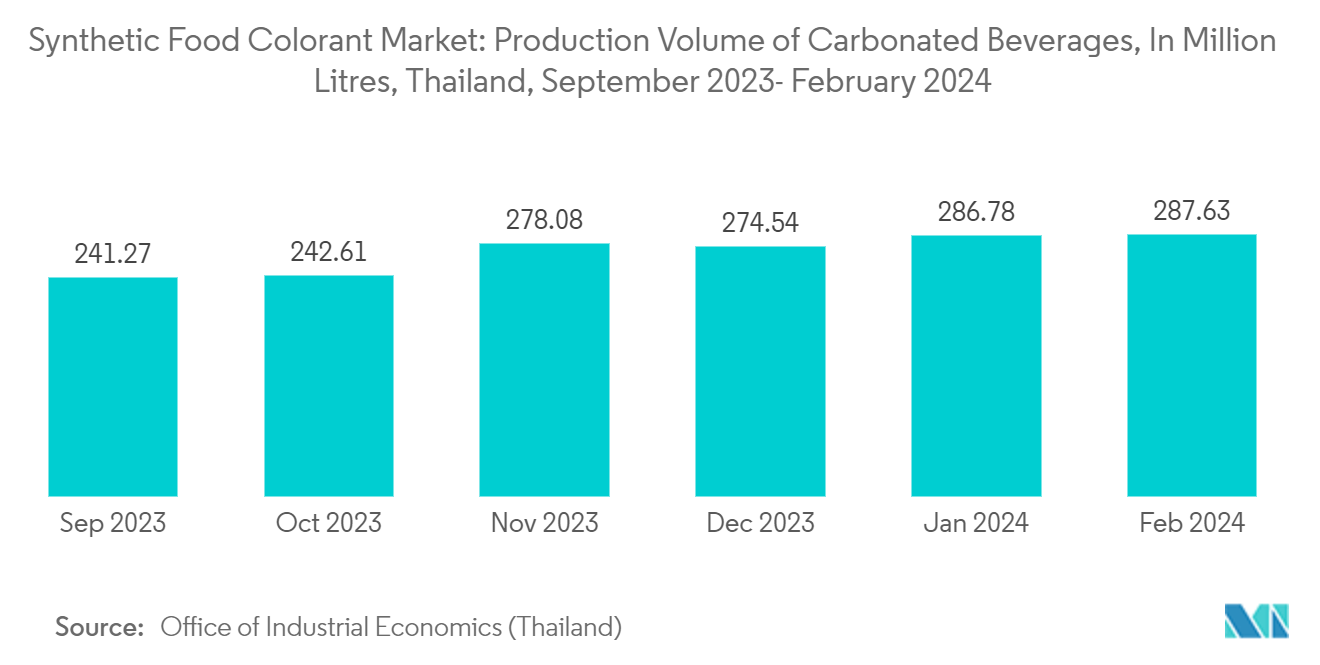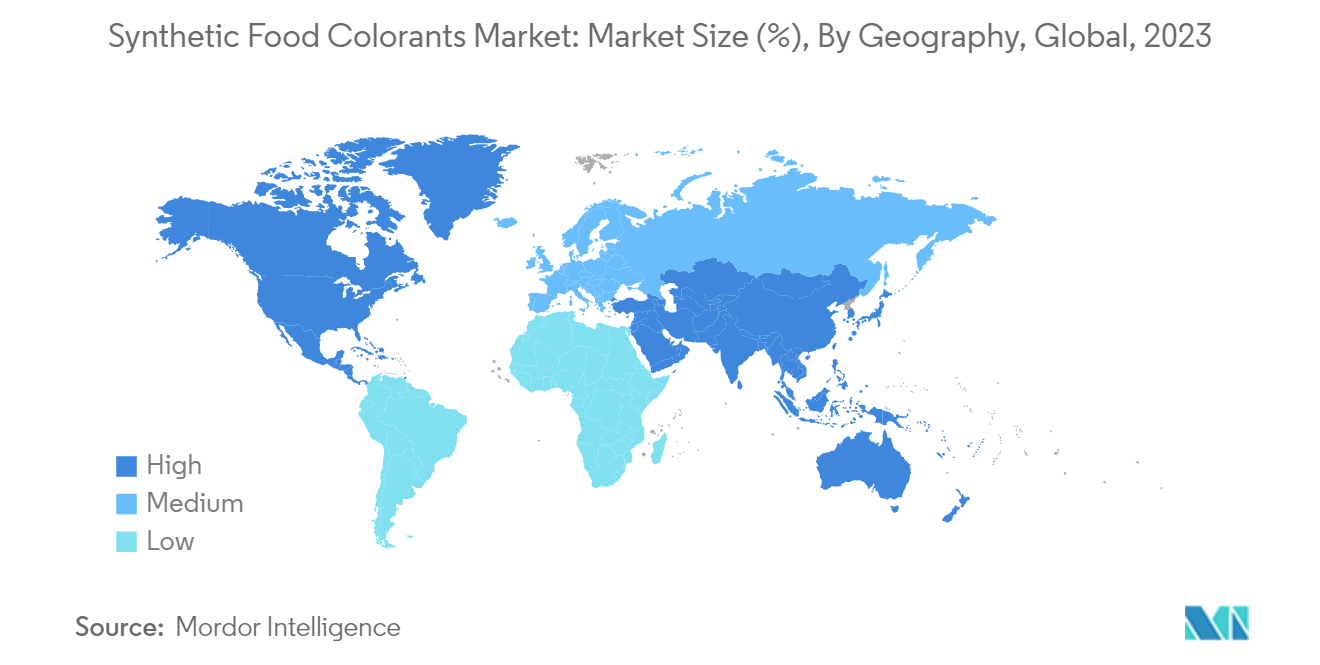Market Trends of Synthetic Food Colorant Industry
Growing Use of Synthetic Colorant in Beverages Fuel the Market
The growing use of synthetic colorants in beverages is linked to consumer demand for visually appealing products, the desire for vibrant and consistent coloring, and the cost-effectiveness of synthetic alternatives compared to natural colorants. The changing food habits coupled with the increasing population of young people drive the market demand for ready-to-drink products. The market witnessed demand for processed beverage products that accelerate carbonated-based beverage consumption. Consumers today expect more from beverages than a means to quench their thirst. Thus, beverages, like soft drinks, offer new drinking experiences and bursts of variant color, suiting the individual consumer’s preferences. This increased demand for synthetic food colors from the soft drink manufacturers. According to the British Soft Drinks Association, the consumption of carbonated soft drinks in the United Kingdom in 2021 was valued at 5,345 million liters, which increased to 5,997 million liters in 2022.
The synthetic food color market is expected to grow due to the increasing consumption of fruit juice around the globe. According to the British Soft Drinks Association, the total fruit juice consumption in the United Kingdom was valued at 956 million liters in 2021, which increased to 973 million liters in 2022. Increasing production and consumption of alcoholic beverages worldwide is directly influencing the growth of the synthetic food color market. According to Beverage Information Group, the total alcoholic beverage sales in the United States were valued at USD 244.8 billion in 2021, which increased to USD 259.8 billion in 2022. Thus, the increasing sale value of alcoholic beverages is expected to increase the demand for synthetic food color during the forecasted period.

North America Holds the Significant Market Share
North America’s significant market share in the synthetic food colorant market is driven by factors such as the region’s large food and beverage industry, demand for visually appealing products, and extensive use of synthetic colorants in various food and beverage applications. The continued popularity of processed and convenience foods in the United States led to a consistent demand for synthetic food colors, as these colors enhance the visual appeal of a wide range of processed food products. For instance, according to the Winsight Grocery Business, the retail sale of processed meat in the United States accounted for USD 29.11 billion in 2022. Regulatory agencies like the Food and Drug Administration (FDA) approved several synthetic food colors in the United States. This regulatory approval assures manufacturers of the safety and suitability of these colors for consumption, driving their use in the market.
Busy lifestyles and convenience lead to higher consumption of packaged and processed foods, often using colorants for visual appeal. The popularity of snacking drives the use of colorants in chips, candies, and other snack products. In Canada, synthetic colorants were most used in bakery products and mixes in 2023. Canada permitted around 29 colorants for food application as of 2023. Allura Red, Tartrazine, Brilliant Blue FCF, and Sunset Yellow FCF are the most commonly used colorants in the country. Synthetic colorants remained dominant over natural colorants, especially in commercially produced foods, due to their cost-effectiveness and vibrant colors. Synthetic food colors are highly sought after for commercial use because of their excellent light stability, affordability, and minimal risk of microbial contamination. Increasing demand from the beverage industry, bakery, and confectionery industries is driving the growth of synthetic food color.


